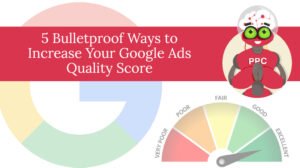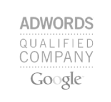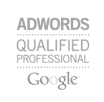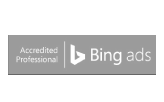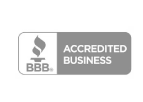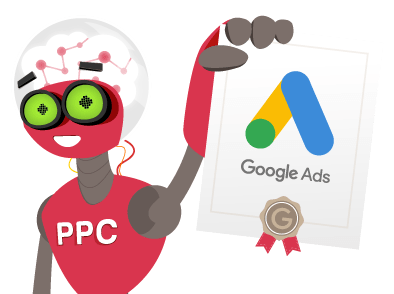When it comes to online advertising, Google Ads (previously known as Google AdWords) is an excellent way to reach a bigger online audience and grow your brand or business. Learning how to use it will help optimize your advertising budget and increase your brand visibility.
Improving your Google Ads' click-through rate (CTR) is a great starting point to help you maximize its performance. You can squeeze more out of your marketing budget and attract more website traffic, a higher quality score, and a lower cost-per-click (CPC).
In this post, we'll tell you what a click-through rate is in Google Ads and how you can achieve higher-than-average CTRs for your ad campaigns.
What Is Click-Through Rate in Google Ads?
If you are new to Google Ads, you may wonder what is click-through rate? How are click-through rates calculated? What is the average click-through rate? Click-through rate or short for CTR, is the number of clicks that a link gets divided by the number of impressions it receives. If your ad was shown a thousand times and 100 people click on it, your CTR would be 10% (100 ÷ 1,000 = 0.10).
What do these terms mean? An impression is when your online ad appears on Google's Search Engine Results Page (SERP) or other search engines. It is basically the number of people who see your ad. Meanwhile, a click is when a person sees and clicks on your ad. This leads them to your ad's destination, which could be your website's landing page, lead form, or app store.
When it comes to the average click-through rate, it varies depending on the industry, medium (paid search, email advertising, display ads), and type of advertising campaign. Generally, a good CTR for display ads is considered to be around 0.5% to 1%. For search ads, a good CTR is around 2% to 3%. However, it's important to note that CTR should not be the only metric used to measure the success of an advertising campaign. Other factors, such as conversion rates and return on investment (ROI), should also be considered.
The Benefits of High CTR
Increased traffic to your website: A high CTR means more people are clicking on your ad and visiting your website.
Improved ad performance: A higher CTR often indicates that your ad is more relevant to your target audience, leading to improved ad performance and potentially better ad placement.
Better Quality Scores: CTR is a key component of Google's Quality Score, which measures the relevance of your ads to your target audience. The higher Quality Score can result to a better ad position and lower ad costs.
More cost-effective advertising: A high CTR means you are getting more clicks for your advertising spend, making your advertising more cost-effective.
Increased brand awareness: Even if someone doesn't click on your ad, a high impression count can still increase brand awareness and familiarity with your brand.
How Can I Improve My Google Ads CTR?
Here are our top nine tips and strategies to help you improve your CTR on a PPC ad, so you can optimize your internet marketing campaigns:
Pick Relevant Keywords
Relevant keywords encourage more people to click on your ads. When it comes to keywords, there are three kinds that will help you earn a higher CTR:
Commercial Intent Keywords
People use commercial intent keywords when they need to buy something. Some examples are "best coffee maker" or "accounting software." Stay away from informational keywords such as "what is accounting software" as they lead to lower CTRs.
Branded Keywords
Use branded keywords to promote your brand and offerings. You can also use branded keywords for partner brands, rival brands, and other brands that your audience may search for when they need to buy a product or service.
Local Keywords
Keywords that denote a local location, such as "New York pet store," usually attract higher CTRs since locals normally have higher commercial intent.

Harness the Power of Negative Keywords
When we say negative keywords, we're talking about keywords that you'd rather not be associated with. For example, if your brand sells new clothes, "used" and "second-hand" can be your negative keywords since you don't want Google to display your ads to people looking for preloved clothes.
Identifying negative keywords will prevent your ads from being displayed to searchers who aren't likely to be converted or buy from you. This helps you save your ad spend for more high-probability target audiences who are specifically searching for what you have to offer.
Limit Your Target Audience
Target a specific audience. This will help you create targeted ad copy that resonates with your niche while improving your CTR.
Write Short and Simple Ad Content
When it comes to online ads, people usually don't read them fully. So, ensure that your ads are simple and skimmable, and design them so your key message can be understood at a glance.
Here are some tips to guide you:
Incorporate your target keyword in your headline, description, and display URL, but avoid repeating it.
Avoid using the full allowable number of characters if it isn't necessary for your message.
Don't use abbreviations and acronyms that aren't easily understood.
Use simple and easily readable language.
Write a Powerful CTA
It's not enough to simply inform your users of what you're offering and why it's better or preferable, you must also include a proper call to action so they perform the desired behavior.
Some examples of CTAs are "Buy now," "Contact us today," and "Download now." These simple words create a small push that makes a huge difference in your ad message.
Add Special Offers in Your Headlines
People love special promotional offers like discounts, deals, giveaways, and free shipping. So, if you have a special offer for your customers, don't keep it a secret and keep it tucked away in the fine print of your product description. Mention it in your headlines too.
When people look at your ad, the headline is often the first thing people see. In addition, numbers usually perform well in headlines, while terms like "free" draw more customers. So, ensure your headline is as attractive as possible by including your offers.
Use But Don't Overuse Dynamic Keyword Insertion
Dynamic keyword insertion (DKI) automatically allows you to tailor your ad content to a search query. In this form of pay-per-click (PPC) advertising, Google automatically inserts a target keyword in your ad content based on the search. While it is a clever strategy, it has its pitfalls, as it can result in irrelevant keywords being inserted in your ad.
So, use DKI to get higher CTRs, but don't rely on it too much.
Regulate Your Use of Google Ads Extensions
Google Ads extensions enable your ad to appear in more search engine results pages, increasing CTR. While it can boost your CTR to some extent, the difference isn't significant. So, don't expect too much from it. Instead, focus on the quality of your ad content.
Test Your Ads
You don't need to test all your ads, but you must surely test as many as you can. Even if you use responsive search ads that somewhat test your ad copy, you must still conduct ad testing on your own. Pick your top two or three ad groups and test away.
Conclusion
As you can see, there are tons of ways to boost your search ad CTR. By using the strategies we mentioned here, you can develop more effective ideas on what works with your audiences and how to target them better. However, remember, even though you may have a high click-through rate, it does not mean you have a low cost per conversion (CPC). Be sure to look at the conversion rate as well.



